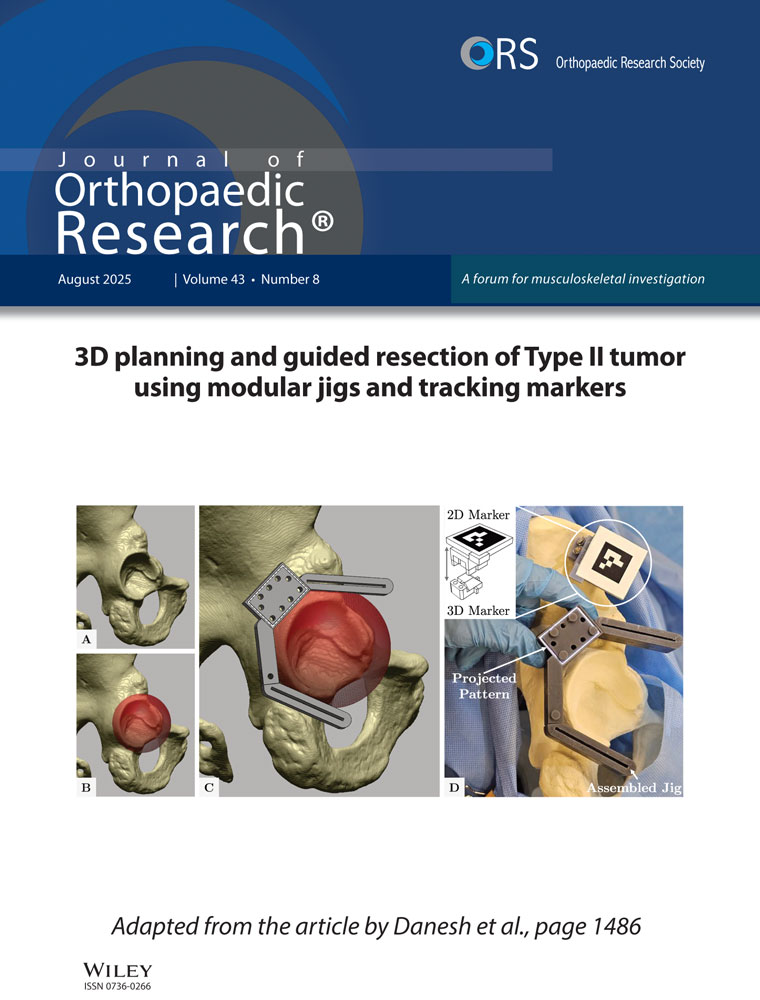Meniscal repair using engineered tissue
Abstract
In this study, devitalized meniscal tissue pre-seeded with viable cultured chondrocytes was used to repair a bucket-handle incision in meniscal tissue transplanted to nude mice. Lamb knee menisci were devitalized by cyclic freezing and thawing. Chips measuring four by two by one-half millimeters were cut from this devitalized tissue to serve as scaffolds. These chips were then cultured either with or without viable allogeneic lamb chondrocytes. From the inner third of the devitalized meniscal tissue, rectangles were also cut approximately 8 × 6 mm. A 4 mm bucket-handle type incision was made in these blocks. The previously prepared chips either with (experimental group) or without viable chondrocytes (control group) were positioned into the incisions and secured with suture. Further control groups included blocks of devitalized menisci with incisions into which no chips were positioned and either closed with suture or left open with no suture. Specimens were transplanted to subcutaneous pouches of nude mice for 14 weeks. After 14 weeks, seven of eight experimental specimens (chips with viable chondrocytes) demonstrated bridging of the incision assessed by gross inspection and manual distraction. All the control groups were markedly different from the experimental group in that the incision remained grossly visible. Histological analysis was consistent with the differences apparent at the gross level. Only the experimental specimens (chips with viable chondrocytes) with gross bridging demonstrated obliteration of the interface between incision and scaffold. None of the control specimens revealed any cells or tissue filling the incision. Tissue engineering using scaffolds and viable cells may have an application in meniscal repair in vivo. © 2001 Orthopaedic Research Society. Published by Elsevier Science Ltd. All rights reserved.




